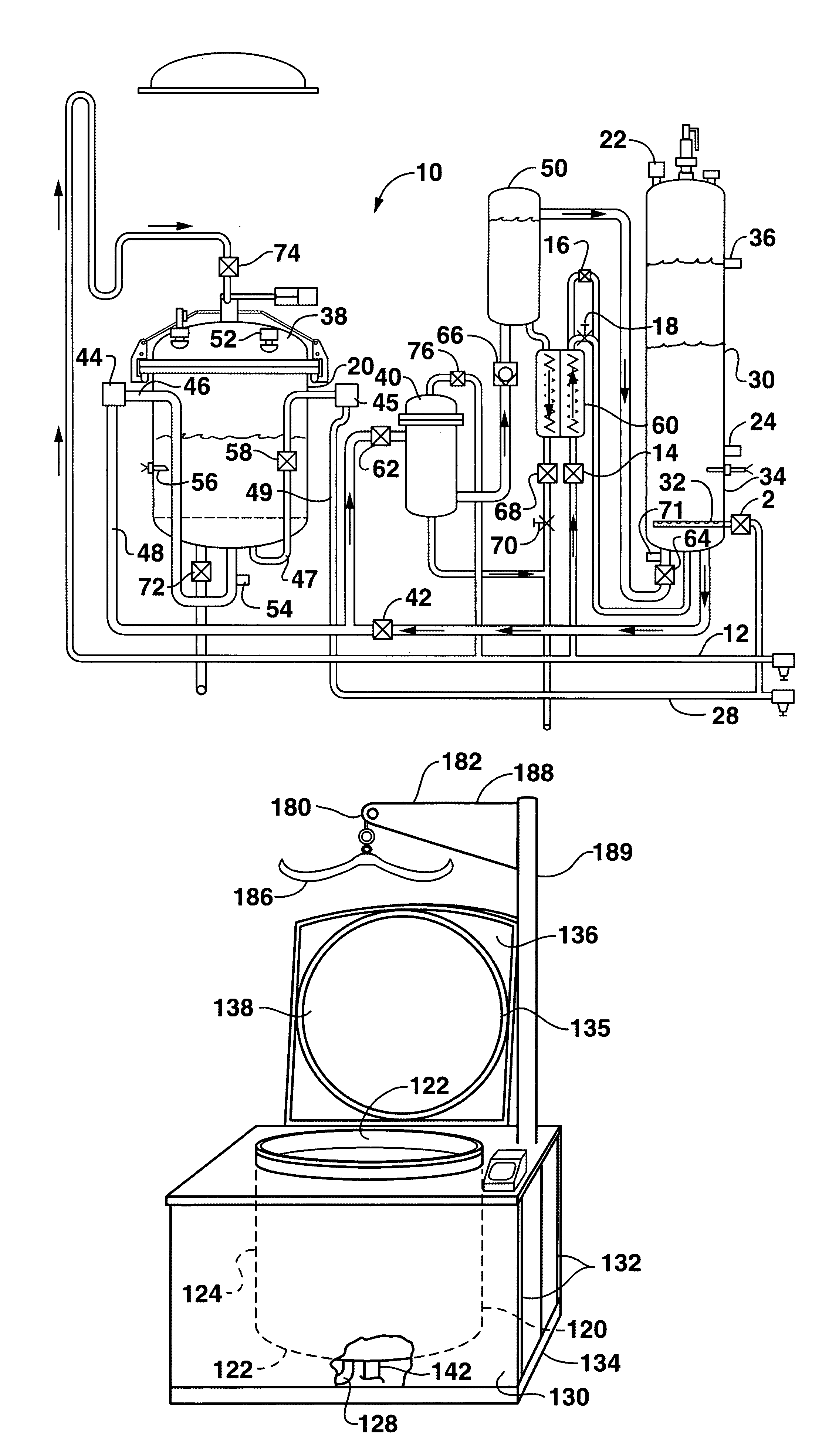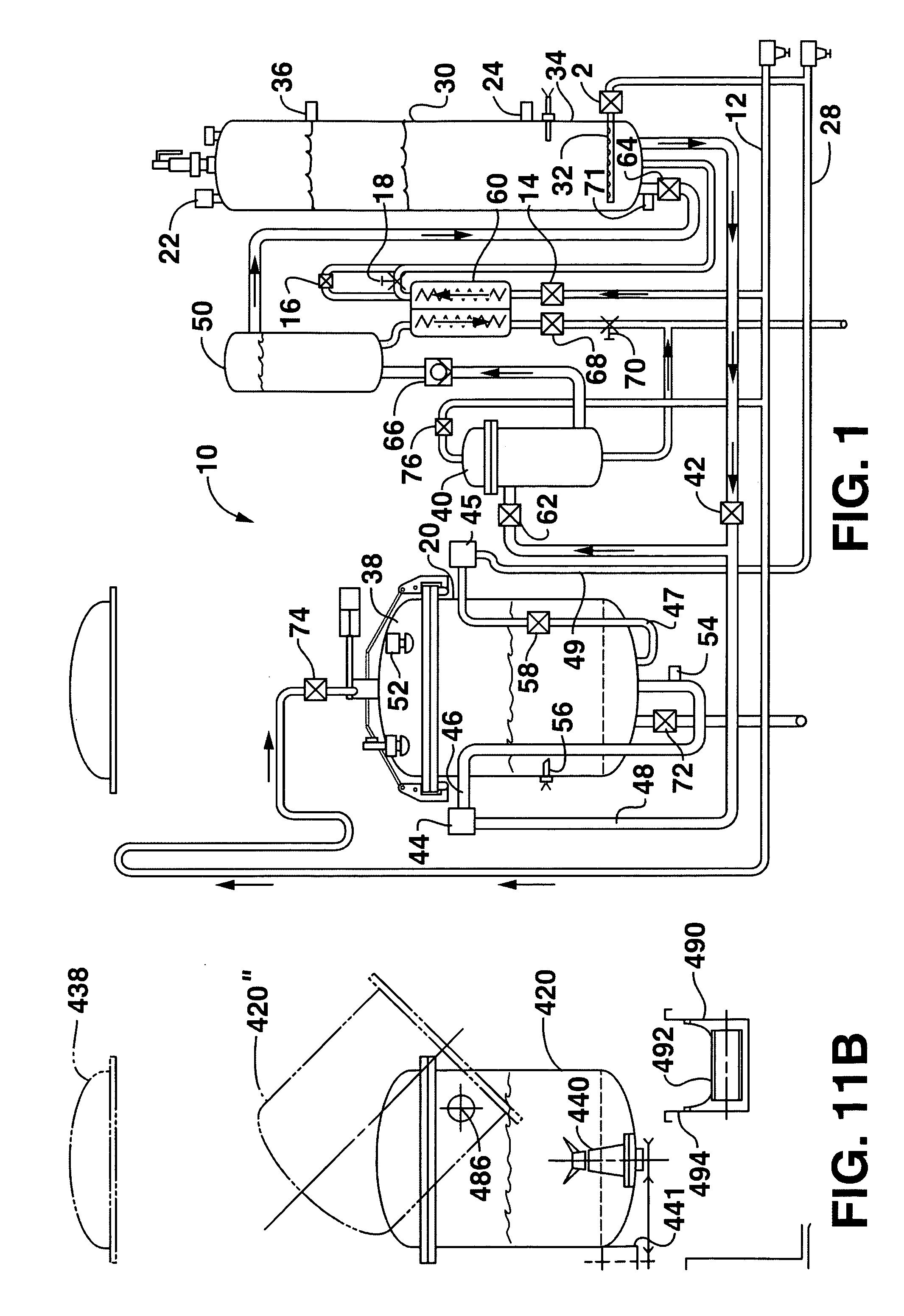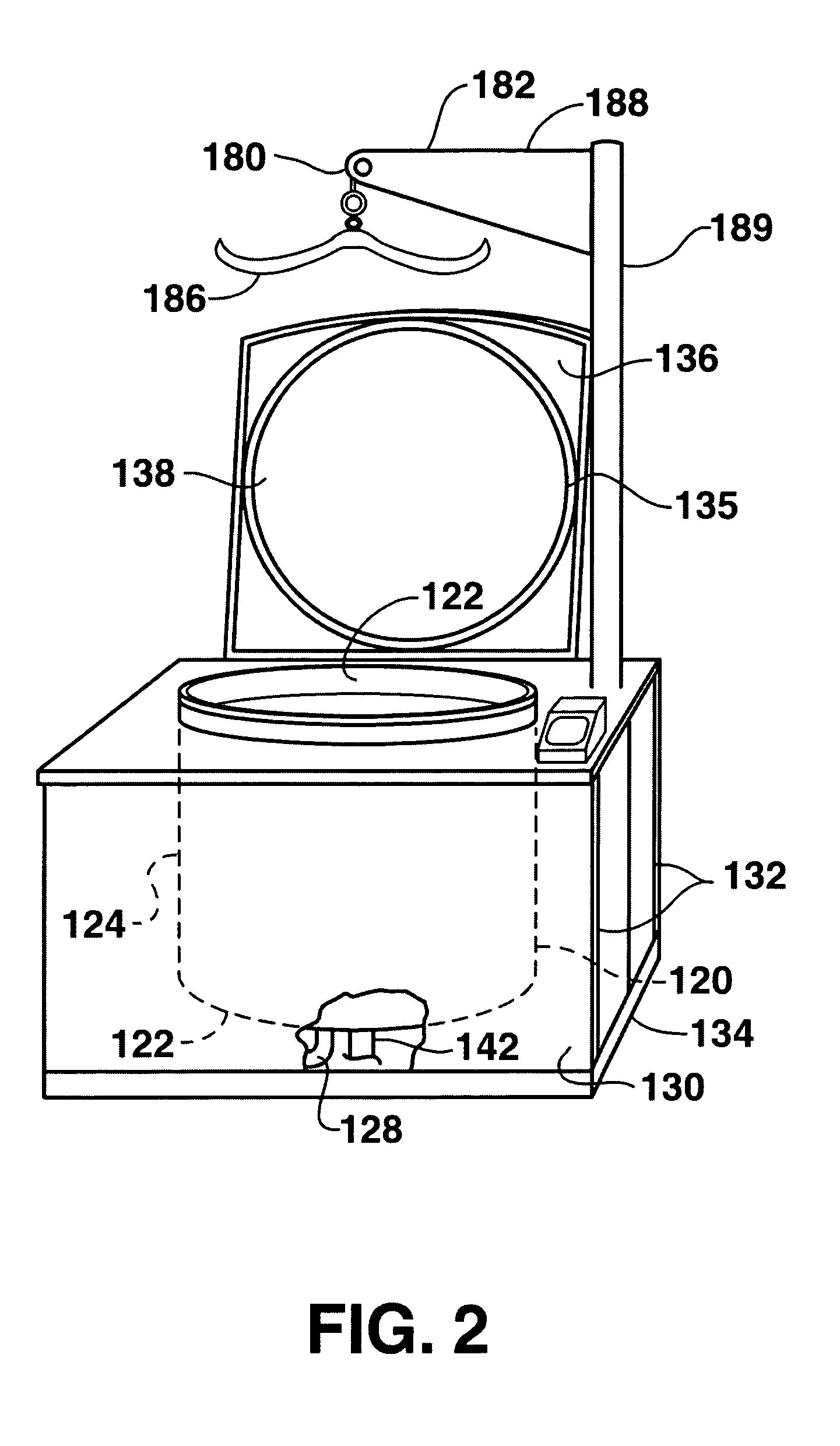Method for processing infectious waste and system for the same
a technology of infectious waste and processing method, applied in grain treatment, drying machines, light and heating equipment, etc., can solve the problems of large amount of fresh liquid that requires a long period of time, large equipment, environmental problems, etc., and achieve the effect of increasing the efficiency and safety of treating
- Summary
- Abstract
- Description
- Claims
- Application Information
AI Technical Summary
Benefits of technology
Problems solved by technology
Method used
Image
Examples
Embodiment Construction
[0034]Reference will now be made in detail to the presently preferred embodiments of the invention, one or more examples of which are shown in the figures. Each example is provided to explain the invention, and not as a limitation of the invention. In fact, features illustrated or described as part of one embodiment can be used with another embodiment to yield still a further embodiment. It is intended that the present invention cover such modifications and variations.
[0035]FIG. 1 illustrates a system, generally 10, for processing infectious waste to biologically neutralize the waste so that the waste may be safely discarded or recycled. The system 10 includes a processing chamber 20, a holding tank 30, a filter 40, a transfer tank 50 and a heat exchanger 60 that are used to neutralize infectious waste using superheated water, while recycling at least a portion of the water to be reused again in the process. Thereby, efficiency of the processing of infectious waste can be increased ...
PUM
 Login to View More
Login to View More Abstract
Description
Claims
Application Information
 Login to View More
Login to View More - R&D
- Intellectual Property
- Life Sciences
- Materials
- Tech Scout
- Unparalleled Data Quality
- Higher Quality Content
- 60% Fewer Hallucinations
Browse by: Latest US Patents, China's latest patents, Technical Efficacy Thesaurus, Application Domain, Technology Topic, Popular Technical Reports.
© 2025 PatSnap. All rights reserved.Legal|Privacy policy|Modern Slavery Act Transparency Statement|Sitemap|About US| Contact US: help@patsnap.com



